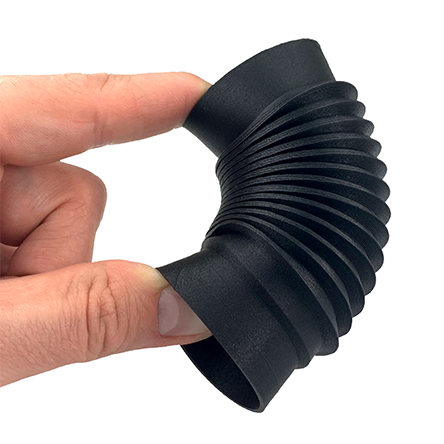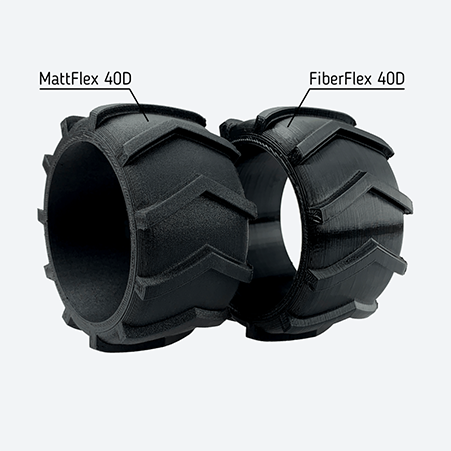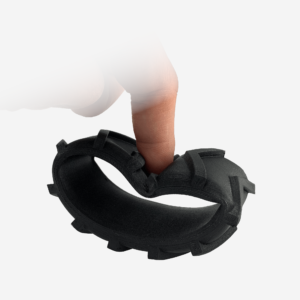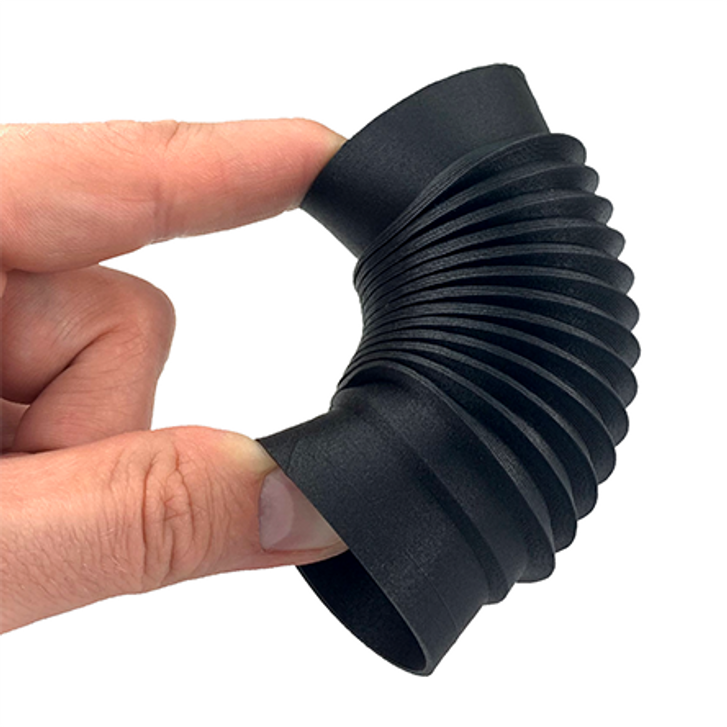MattFlex 40D - Flexible Matte 3D Printing Filament from Fiberlogy

Rubber-like filaments are still a novelty for many 3D-printing users. For some, it’s a true challenge where any satisfactory result is hard-won with many hours of trial-and-error. Meanwhile, users who have already tried and mastered this material are able to complete projects on their printers which are impossible to achieve with traditional materials such as PLA, ABS or Nylon.
The arrival of the new MattFlex 40D from Fiberlogy is a strong incentive to get even more interested in flexible filaments because the effects that can be obtained with it are exceptional. With a matte finish that perfectly hides the bonding of the layers and a surface that reflects light to a minimum, models made with MattFlex 40D look much better than other rubber-like filaments on the market.
How do you print with “rubber”?
You would have thought that satisfactory results with flexible filaments can be achieved only on printers equipped with a direct drive extruder system. Meanwhile, the Fiberlogy Flex family of filaments works just as well on Bowden-type printers such as the popular Enders.
The key to success is the proper selection of parameters, but also the proper preparation of the machine. It is worth starting by reducing the pressure on the extruder. Too much pressure can cause “escaping” of the filament or its blocking. Reducing the retraction will also be a clever idea. Excessive or too fast retraction of the filament can quickly lead to nozzle clogging.

What is most important, however, is the printing speed. Typically, flexible filaments are recommended to print at around 20mm/sec. However, with Fiberlogy MattFlex 40D, as was the case with FiberFlex 40D, excellent results can be achieved at 45 mm/s. Even 60 mm/s with a direct extruder should not adversely affect the result.
The last step will be the proper preparation of the substrate. The Flex family of filaments adhere very well to both PEI and glass substrates. If you bump into any problems, you can try using Magigoo Flex Adhesive.
After printing, the model can be easily removed by heating the bed and gently levering it with a spatula. Tugging at a model held firmly to the table will only lead to tearing off the bottom layers of the print.

Flex – new possibilities
But does all this “fight” for rubber printing make sense? Absolutely! Flexible filaments open new possibilities.
Their strength and resistance to harsh conditions make this material suitable for a host of practical applications. From model and robot tyres, gaskets and vibration damping pads to clothing components and wristbands for watches and smartwatches – the list of areas where MattFlex 40D will prove its worth can go forever.
Compared to popular filaments such as PLA or ABS, we have much more influence on the properties of the model itself when preparing it for printing. The number of contours, the density of the filling and its structure will affect the hardness of the result, which means that a model made from 40D Shore hardness filament may be softer than a model made from its counterpart with a hardness of even 20D (about 90A). At the same, time it will be easier to print. In the case of materials from the Flex family, such as MattFlex or FiberFlex, it is up to the user to decide how the final model being the result of their efforts will behave.
Rubber-like materials are extremely rewarding in the field of 3D printing, and the wide range of their uses is a convincing argument for adding them to the list of frequently used filaments.
How to print with Fiberlogy MattFlex 40D:
Nozzle Temperature: 210-230°C
Bed Temperature: 50-70°C
Closed chamber: not required
Fan: 50-75%
Flowrate: 105-110%
Printing Speed: < 60 mm/s
Surface: glass, masking tape
Retraction: 1-2 mm
Retraction Speed: 10-30 mm/s
To remove the print easier, it is recommended to heat the bed to 110°C


